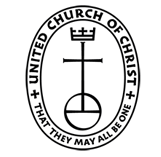“All That Is Possible” – Easter Sermon March 31, 2013
March 31, 2013 – Easter
Scripture: Luke 23:55-24:12
The women who had come with him from Galilee followed, and they saw the tomb and how his body was laid. Then they returned, and prepared spices and ointments. On the Sabbath they rested according to the commandment. But on the first day of the week, at early dawn, they came to the tomb, taking the spices that they had prepared. They found the stone rolled away from the tomb, but when they went in, they did not find the body. While they were perplexed about this, suddenly two men in dazzling clothes stood beside them. The women were terrified and bowed their faces to the ground, but the men said to them, “Why do you look for the living among the dead? He is not here, but has risen. Remember how he told you, while he was still in Galilee, that the Son of Man must be handed over to sinners, and be crucified, and on the third day rise again.” Then they remembered his words, and returning from the tomb, they told all this to the eleven and to all the rest. Now it was Mary Magdalene, Joanna, Mary the mother of James, and the other women with them who told this to the apostles. But these words seemed to them an idle tale, and they did not believe them. But Peter got up and ran to the tomb; stooping and looking in, he saw the linen cloths by themselves; then he went home, amazed at what had happened.
Sermon: All That Is Possible
by Rev. Doreen Oughton
Will you be with me in the spirit of prayer? May the words of my mouth and the meditations of all of our hearts be acceptable in thy sight, O God who is the very ground of my being.
So you know this story, right? It’s told year after year after year – how Mary Magdalene, either alone or with other women, goes to the tomb and finds that Jesus’ body is not there. She, or they, run back and tell the others (except in Mark’s gospel, when they rush off terrified to say nothing to anyone) who are at best skeptical. In this story, we are told the disciples find this testimony to be an idle tale. The words translated as idle tale could even be interpreted more strongly – it could say that the disciples thought this was crazy talk! So alright… who here has wondered the same thing about the resurrection – whether it is just crazy talk, delusions, pie in the sky? I mean, what’s with this tomb that sounds like a cave? It’s not like he was in a hole with dirt piled atop him, right? Surely people have wondered whether he was all the way gone when they put him in the tomb. So the “logical” argument goes that either he died and stayed dead, or he wasn’t really dead when he was put in the tomb. So many of the stories about his post-death appearances include people who didn’t recognize him, right? When people talk about Jesus being alive, they might just mean that his spirit is alive, that he lives on in people’s hearts, that we bring him to life when we act as he would act. Did the disciples just see someone who reminded them of their friend and teacher, who lived the same way, aroused the same hopes? Did he really come back? Is it possible?
Or maybe they did see him, and their trouble with recognition was because they never expected to see him. They kept themselves from seeing what they thought could not be true. So maybe, just maybe, he wasn’t really all the way gone when they took him off the cross. There are conditions that mimic death, right? The story of Romeo and Juliet was based on Juliet taking a drug that gave the appearance of death. Is that possible?
To tell you the truth, those lines of thinking don’t interest me much. In this world we are always looking for flaws in assertions. We take our time believing many things, don’t we? We look for proof, certainty. Heaven forbid we believe something that turns out not to be true. How we hate to look foolish or naïve, or even stupid. Such skepticism is the norm, I would say. It might feel empowering or satisfying to be in a position of withholding belief – you place the burden of proof on others, you feel safe and secure – you can’t be said to be wrong for waiting for proof, for something just a little more convincing, right? But to me, it is not very inspiring. It seems to close things down rather than open things up. Because remember – we create with our thoughts and beliefs. If we keep telling ourselves no, that can’t be, well then, that can’t be. But only because that is what we are saying to ourselves.
What inspires me in this story is the sense of wonder that these women allow themselves, and even try to share. The men had trouble connecting with this, except Peter who hustled down to the tomb to see for himself, and also came away “amazed.” I’m inspired by what it was that led them to such wonder – and that is nothing. What they expected was not there. Yes, I’m sure the angels were quite astounding also, but Peter didn’t even see the angels. He saw nothing, an empty tomb. It is an empty tomb that was full of the promises of God. You’ve probably heard how the common saying of “seeing is believing” has it wrong. The way things really work is that believing is seeing. And I think it worked that way for all who later saw Jesus. While they may have expressed skepticism, at some level they not only believed, but they knew that Jesus had died from his physical body, and returned in a physical body.
There are different levels of knowing, you see. We are made up of three parts – body, mind and soul. On the soul level, we know every truth there is to know. But on the body and mind levels, we have forgotten so, so much. And when you think about the ways we are all connected, with each other and with God, it is most deeply at the soul level. So why would we let our bodies and even our minds determine what is true? Why would we rely on our eyes and ears and fingers to tell us what is true? Why would we rely on logic or reason? Those are the parts of us that forget what is most true about ourselves, about each other, and about God.
So I’m assuming we all know what and where our body is, right? What about our minds? Where are our minds (drifting, checked out 🙂 )? Some believe our mind is in our brain, but is that true? I’ve read recently an assertion that our mind is actually all through our bodies. You know how parts of our body have a mind of their own? How so much of our body just knows what to do? How our bodies respond to hypnotism without our brains awareness? So let’s consider that as a possibility. Or do you have another idea about where the mind is? So now I ask you, where is your soul? Does your soul envelop your body, or does your body envelop your soul? The reason I’m focusing on this is because there is something about the idea of the empty tomb containing so much that reminds me of the soul.
I believe that the soul envelops the body, that it is within us, but also around us and between us. There is something about the thing we can’t see, the thing that is nowhere that is now here. You’ve heard the saying of reading between the lines, right, understanding something that is not written out or made explicit. You can know something without physical evidence, but with intuition, a hunch. What a bind it is for us when our minds and bodies interfere with these hunches. Our bodies and minds are limited. They base knowledge on what has already happened, on what we have seen in the past, on physical evidence, or even on experiential evidence. Our experience has been that when life leaves a thing it does not come back, at least not in the same form. That is what we have known in our bodies and minds.
We hope, and maybe even believe that after death some sort of life continues. Perhaps we are open to this possibility because of the knowledge of our soul that we are more than our bodies and minds. We are, you know. We are more than our bodies and minds. It is said that God incarnated in Christ, lived, died and was resurrected in order to save us. Perhaps one way he saved us was to help us see the limitations of knowledge of the body and mind. Perhaps his acts were meant to stir up the knowledge of our souls, that we are of God, that we are called to and meant for more than the way we have been living. We are called to a freedom to create, to be, to do ANYTHING. Christ told his followers that all that he did, they could do, and more. He said you can do anything in my shem – often interpreted as “name” but it the word translates also as “vibration.” We can do anything in the vibration that Jesus did things, at that level of the soul, at that level of deep truth. Christ didn’t come to save us from our bad and sinful natures. He came to recall us to our beautiful, holy, divine natures. He came as the son of God to remind us that we are all children of God, we were all made in God’s image. He understood that there is a reason we can’t always see that, can’t remember it, but our forgetting doesn’t make it any less true.
Personally, I don’t believe that our salvation depends on believing certain things about Jesus. I think it depends more on what we believe about ourselves. And we have to believe beyond what we can see, beyond what we have experienced about each other and ourselves. I think our salvation lies in believing in the unseen possibilities, in believing that we are precious in the eyes of God, that we are called to freedom from fear, freedom to love more, connect more, forgive more. What might be possible for you that you haven’t seen yet? Can you believe it? Can you let your soul convince your mind and body so that it comes about? Jesus came as son of God and son of Man to show us what we can do and be. And he did this out of nothing but love. Let’s be dazzled and amazed by that.








